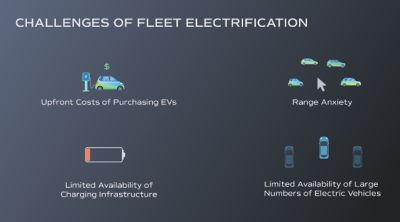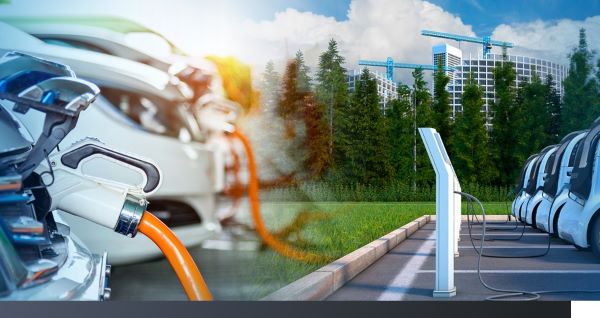Date : 28/11/2023
Relevance: GS Paper 3 – Environment and Ecology
Keywords: AQI, TERI, PM10, EVs
Context-
Urban air pollution in Indian cities has reached alarming levels, with the air quality index (AQI) frequently entering the red zone, posing severe health risks to millions. Recognizing the pressing need for mitigation strategies, two pivotal studies focusing on Delhi—Urban Emission (2015) and the TERI study (2018)—have identified transport and construction as significant contributors to the PM2.5 and PM10 pollutants responsible for urban smog.
What is Fleet Electrification?
Fleet electrification refers to the process of replacing fleets of traditional gasoline-powered or diesel-powered vehicles with electric vehicles within a business or organization. Fleet electrification can include a wide range of vehicles, from passenger cars and trucks to buses and delivery vehicles.
Advantages of Electrifying Fleets
1. Environmental Benefits of Electric Vehicles
Electric Vehicles (EVs) play a crucial role in combating climate change by significantly reducing greenhouse gas emissions. Unlike traditional fossil fuel vehicles, EVs produce zero tailpipe emissions, leading to a substantial decrease in air pollution and contributing to a healthier environment. This reduction in harmful pollutants, such as nitrogen oxides and particulate matter, results in improved public health.
2. Energy Diversity and Security Enhancement
EVs contribute to energy diversity by reducing reliance on oil imports. With the ability to draw power from various sources, including renewable energy like solar and wind, EVs offer a pathway to cleaner and more sustainable transportation. This diversification lessens vulnerability to oil price fluctuations and enhances energy security by decreasing dependence on fossil fuel imports.
3. Technological Advancements and Employment Opportunities
The adoption of EVs drives advancements in battery technology, electric drivetrains, and charging infrastructure. These technological strides extend beyond the automotive sector, finding applications in energy storage for renewables and grid stability. The transition to electric mobility also fosters job creation and innovation, particularly in battery manufacturing, renewable energy, and charging infrastructure.
4. Urban Decongestion through Electric Mobility
Electric vehicles play a pivotal role in alleviating urban congestion by promoting shared mobility and compact vehicle design. Shared mobility services reduce the overall number of vehicles on the road, consequently minimizing the demand for parking spaces. Compact EV designs, tailored for urban environments, offer an efficient and sustainable solution to congestion and emissions, providing a more streamlined urban transport option.
5. Economic Benefits of Fleet Electrification

In addition to the environmental benefits of fleet electrification, there are also economic benefits to be gained when you electrify your fleet. The economic benefits associated with the electrification of fleets include significant cost-savings, improved brand reputation, vehicle-to-grid opportunities, government incentives, and job growth.
Challenges in Electric Vehicle Adoption in India

1. Economic Barrier: High Initial Investment in Electric Vehicles
The substantial upfront cost of electric vehicles (EVs), primarily attributed to expensive battery technology, poses a financial obstacle to widespread adoption. Overcoming this challenge requires strategic interventions.
2. Infrastructure Hurdle: Limited Charging Facilities
India's charging infrastructure is in its early stages, mainly concentrated in urban centers. This uneven distribution presents challenges, particularly for EV owners without dedicated parking spaces. Addressing this hurdle is crucial for the convenience of EV usage.
3. Range Concerns: Overcoming Range Anxiety
The fear of running out of battery charge, known as range anxiety, remains a significant hurdle. Despite improvements in driving ranges, the perception persists that EVs may not offer sufficient mileage, especially for long-distance travel. Mitigating this concern involves addressing both perceived and real limitations.
The Urgent Need for Transition:
Given the urgency of addressing air quality concerns, swift deployment of solutions is paramount. The recent demand for 7,750 e-trucks in India by 2030, if realized, could save the country over 800 billion liters of diesel by 2050. However, considering the projected truck fleet of 1.7 crore in 2050, accelerating the transition to e-trucks is imperative. Public funding alone is insufficient; the need of the hour is a pipeline of well-structured, bankable projects that can attract private and institutional capital, maintaining at least a six-to-one ratio with public funds.
Facilitating EV Adoption in India: A Strategic Roadmap
1. Financial Incentives for Affordability
To counter the high initial costs of EVs, implementing subsidies, tax incentives, and financing schemes for consumers and manufacturers is essential. Encouraging favorable loan terms from financial institutions further enhances affordability.
2. Diverse EV Models and Collaboration
Promoting innovation and competition among Original Equipment Manufacturers (OEMs) and start-ups is crucial. This approach aims to diversify the available EV models and encourages collaborative efforts among stakeholders for research and development.
3. Boosting Domestic Manufacturing
Incentives and supportive policies are necessary to stimulate domestic manufacturing of EVs and related components. Establishing a robust supply chain within the country contributes to the growth of the EV sector.
4. Public Awareness Campaigns
Comprehensive campaigns, portals, and platforms are needed to educate the public about the benefits and incentives associated with EV adoption. Emphasizing positive environmental impact, reduced operating costs, and long-term savings enhances public perception.
5. Revamping Energy Infrastructure
Investing in renewable energy sources improves the sustainability of the electricity grid. Implementing smart grid technologies and energy storage systems enhances energy distribution and supply for EV charging, addressing concerns related to infrastructure limitations.
Green Freight Corridors as a Solution:
A transformative approach involves designating certain expressways and national highways as green freight corridors, showcasing the viability of electrified truck transport. To achieve this, an acceleration of feasibility studies, demand aggregation, supplier readiness, and a prudent risk allocation strategy is crucial. Initiating green freight corridors on routes with heavy truck movement, starting with smaller stretches of around 500 kilometers, can serve as a practical demonstration. This initiative requires innovative financial instruments, incentivization of charging infrastructure, facilitation of entrepreneurial efforts, and a supportive regulatory environment to break through the barriers hindering truck electrification in India.
Conclusion
In the urgent quest for cleaner air in our cities, transitioning to electric trucks emerges as a pivotal solution. While challenges such as upfront costs and charging infrastructure constraints exist, the potential benefits in terms of reduced air pollution and energy security are immense. The government's commendable efforts in electrifying buses must be extended to diesel trucks—the major contributors to PM pollution. Establishing green freight corridors, overcoming financial hurdles, and fostering innovation are critical steps toward achieving a sustainable and electrified future for India's truck fleet. Recognizing the urgency of this endeavor is paramount if we aspire to breathe new life into our cities and ensure a healthier future for all.
Probable Questions for UPSC mains Exam-
- Discuss the significance of fleet electrification, especially the shift to electric trucks, in addressing urban air pollution in India. Identify challenges hindering electric vehicle adoption for freight transport and propose strategic solutions to overcome these obstacles. (10 marks, 150 words)
- Examine the economic and technological impacts of transitioning to electric vehicles, focusing on fleet electrification in India. Explore potential economic benefits, challenges, and the role of government policies in promoting sustainable transportation. (15 marks, 250 words)
Source- The Hindu







